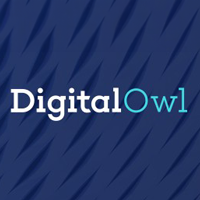Google’s Willow quantum chip
Google recently introduced its latest quantum computing breakthrough, a chip called Willow, which represents a significant step forward. Detailed in a recent article in Nature, Willow is a 105-qubit processor designed to push the boundaries of quantum computing. It demonstrated its power by solving a benchmark problem in under five minutes – a task that would take the fastest classical supercomputers a length of time far exceeding the age of the universe. This milestone highlights both the potential and the growing maturity of quantum computing technology.
Adding qubits to a quantum computer dramatically increases its power, allowing it to solve far more complex problems. However, qubits are fragile and prone to errors, which has limited their usefulness. Willow reduces these errors by combining groups of qubits into more stable units, making the system more reliable as it grows.
This breakthrough in chip technology brings quantum computing closer to practical applications in fields like medicine, finance, and energy.
The immense computational power of quantum computers could transform how we train and fine-tune AI models, leading to AI systems that are more accurate, faster to develop, and capable of handling unprecedented amounts of data. For insurers, this could mean faster risk analysis, more precise underwriting models, and the ability to predict and adapt to emerging trends with greater accuracy.
Generative video with OpenAI
OpenAI has unveiled Sora, an AI-driven text-to-video model that enables users to generate videos through simple text prompts. This tool is accessible to ChatGPT Plus and Pro subscribers, allowing them to create videos up to 20 seconds in length with resolutions reaching 1080p. Features include video generation from text, image animation, and video remixing to deliver a versatile platform for creative expression.
To address potential misuse, OpenAI has implemented safety measures within Sora. The depiction of real people is restricted to a select group of invited testers to mitigate risks such as impersonation and the creation of deepfakes. Additionally, generated videos include watermarks and C2PA metadata to indicate AI involvement, ensuring transparency and accountability.
The launch of Sora represents a significant advancement in AI-generated content, positioning OpenAI at the forefront of consumer-accessible video generation technology. By integrating Sora into its suite of tools, OpenAI continues to expand the creative possibilities available to users, while maintaining a commitment to responsible AI deployment.
What is ahead in 2025?
GenAI is expected to transform multiple industries, including insurance, in the years to come. Experts predict AI will enable personalized treatment plans in healthcare, streamlined risk assessment in finance, and tailored educational content for individual learners, just to name a few examples. Autonomous AI agents are expected to become integral to enterprise operations, performing tasks such as recruitment, marketing, and billing with minimal human intervention. This could reshape traditional software systems and drive operational efficiency across sectors.
However, this rapid integration will bring significant infrastructure and energy challenges. Global data center energy consumption is projected to double by 2030, fueled by power-intensive AI applications. Technical advancements in AI are also expected to become more complex as initial breakthroughs plateau.
Alongside these technical hurdles, ethical and regulatory considerations will take center stage. Robust AI governance frameworks will be essential to address issues like bias and transparency, with governments and companies working to balance innovation with regulatory compliance.
AI-driven productivity gains will contribute to economic growth, while simultaneously prompting workforce transformation. Companies will need to invest in reskilling and upskilling employees, focusing on emerging roles like prompt engineering and data literacy. As AI continues to evolve, it will necessitate thoughtful planning to harness its potential responsibly while mitigating risks associated with its widespread adoption.
While it is difficult to predict exactly how far this evolution will advance in 2025, it is clear thoughtful progress in all areas must proceed quickly to keep pace with technology. It will undoubtedly be another exciting year in GenAI, and I look forward to bringing you more updates and their implications for insurers as we move through it.
Have question or comment for Jeff? Join the conversation.




